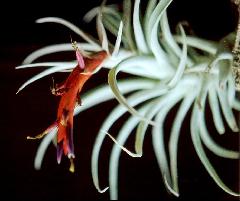
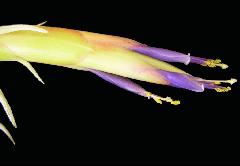
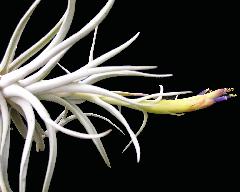
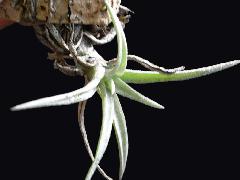
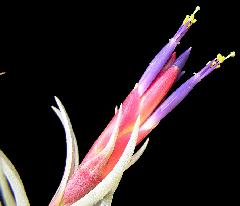
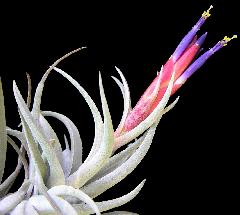
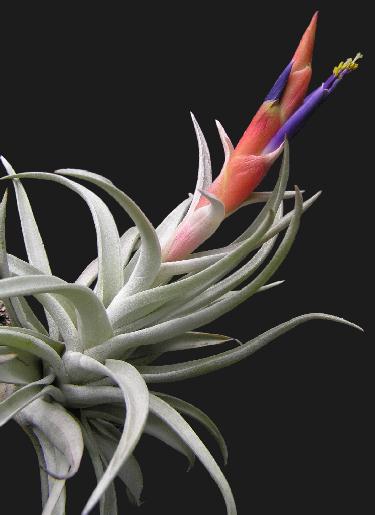
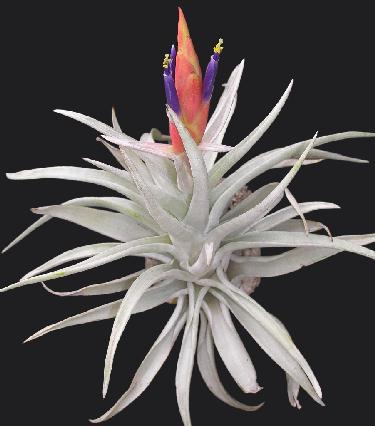
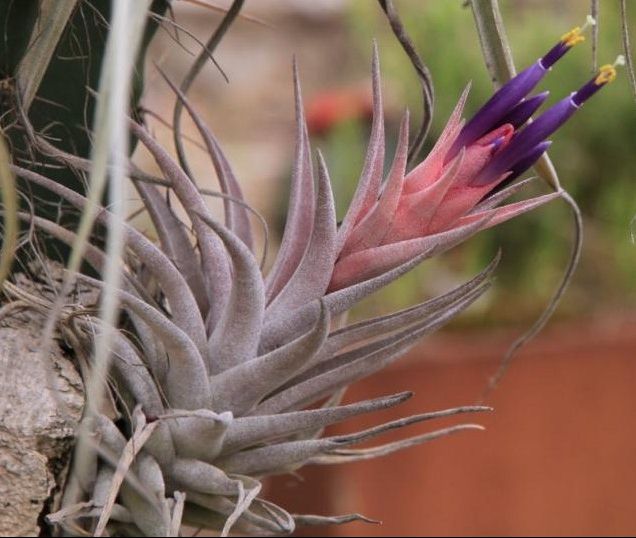
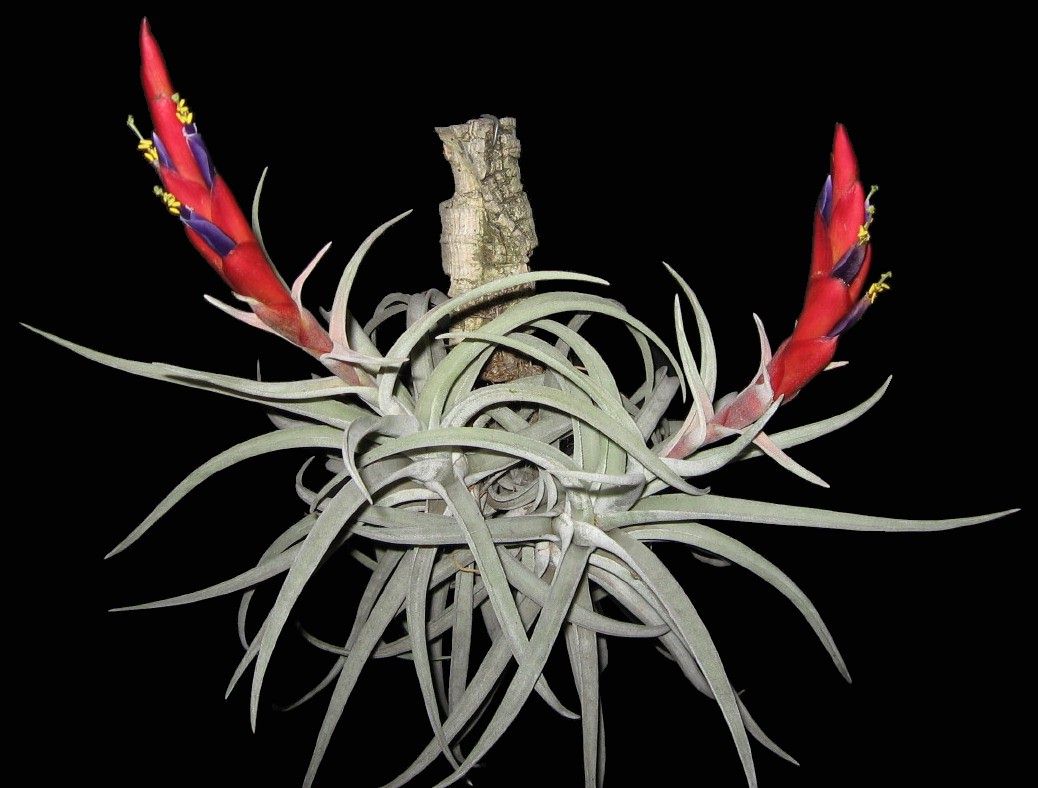
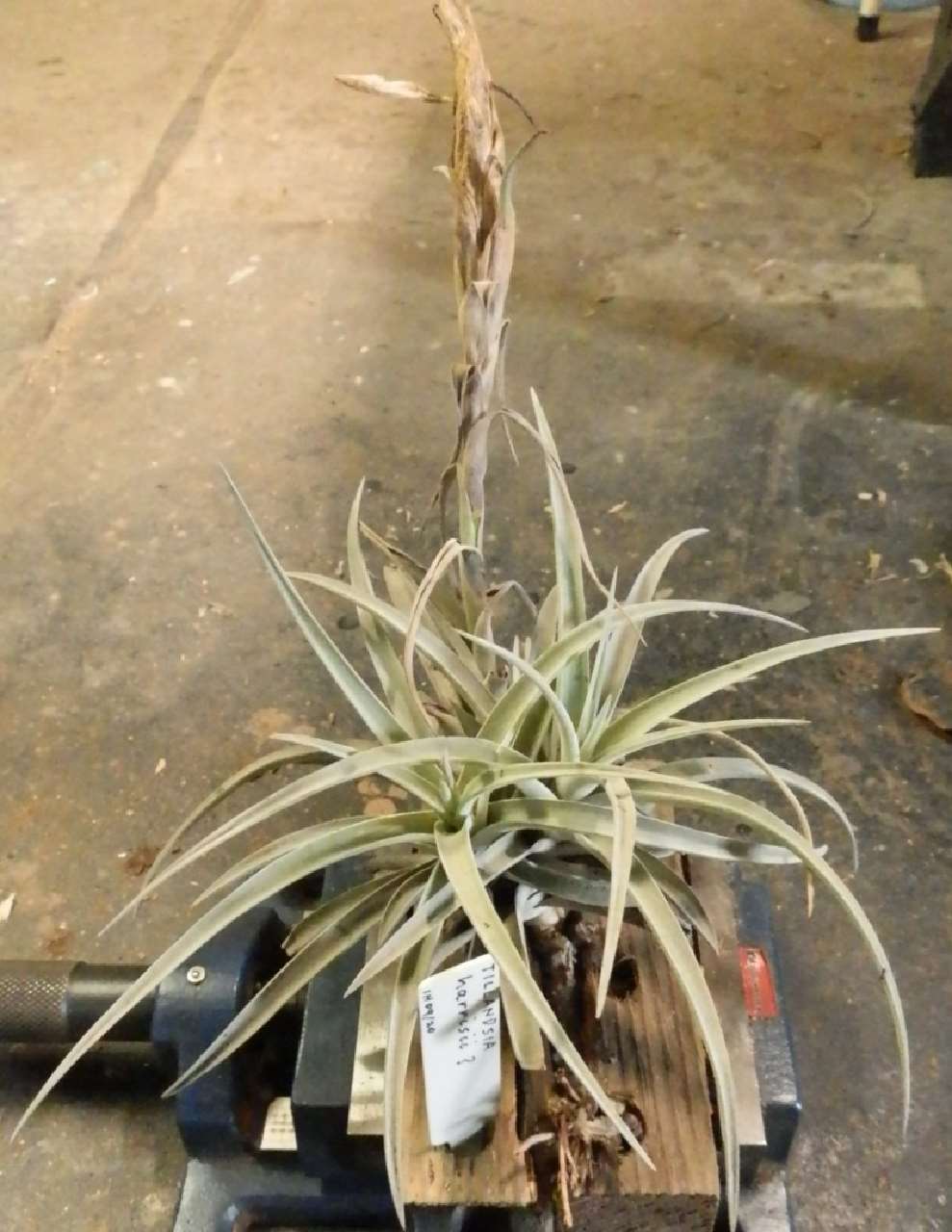
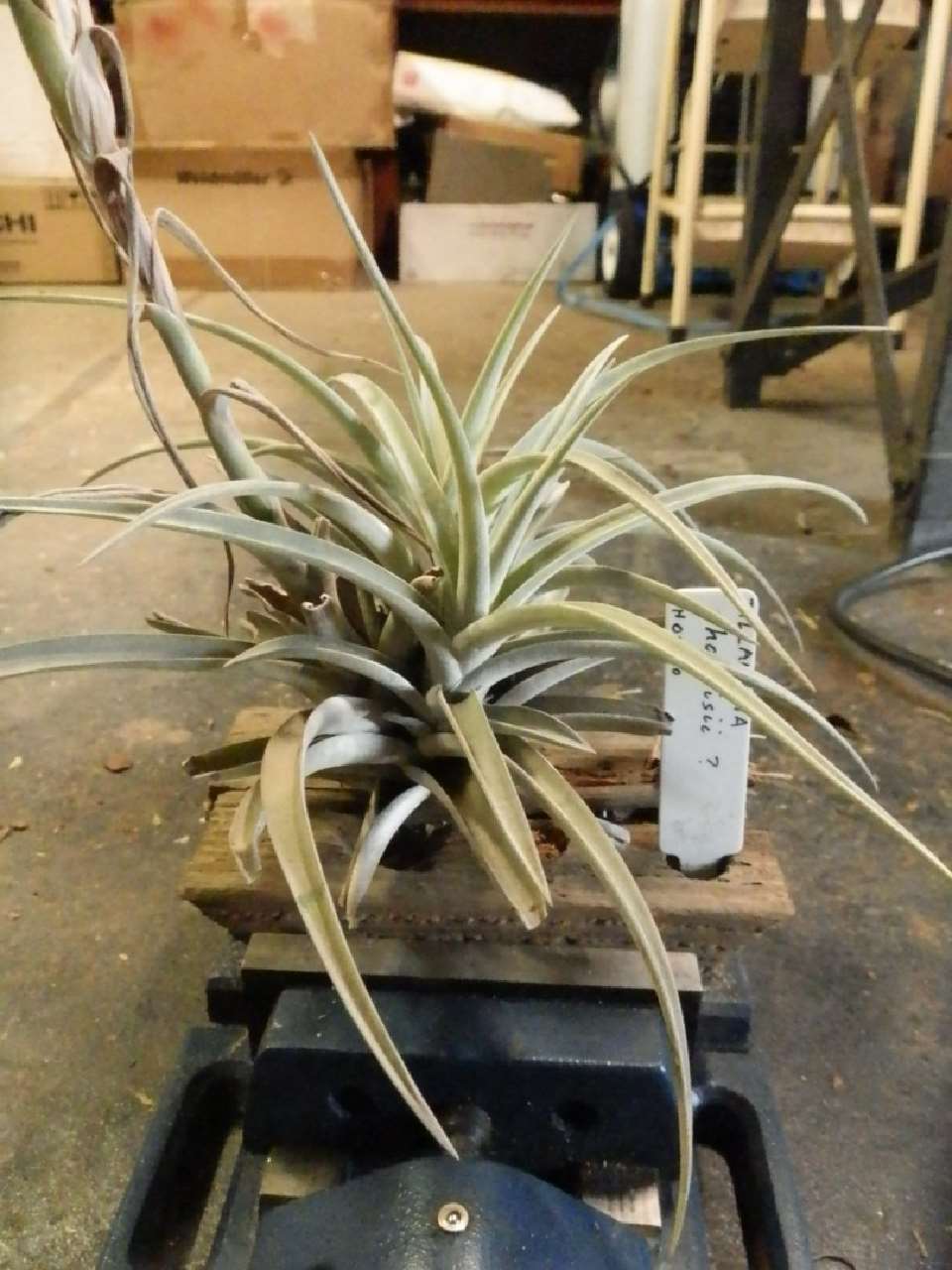
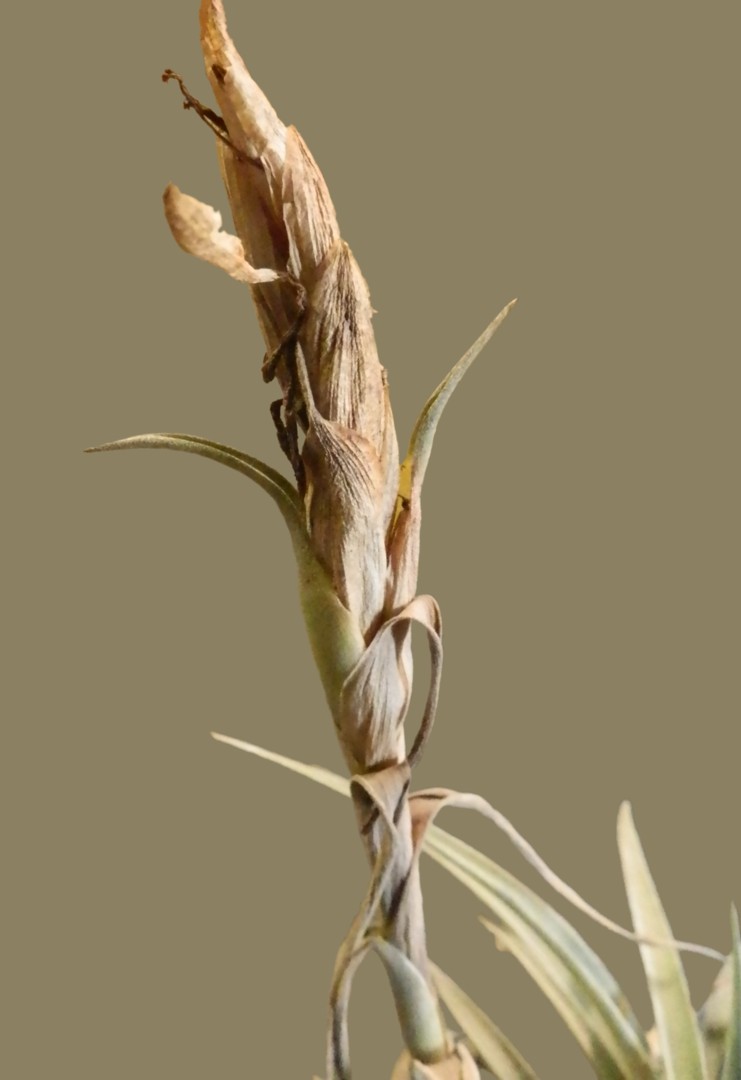
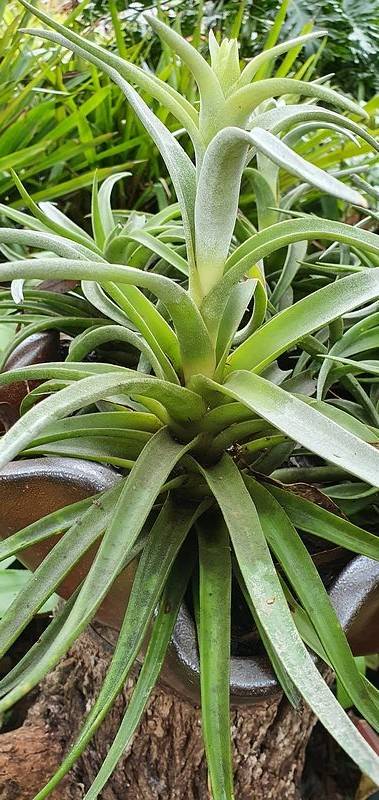
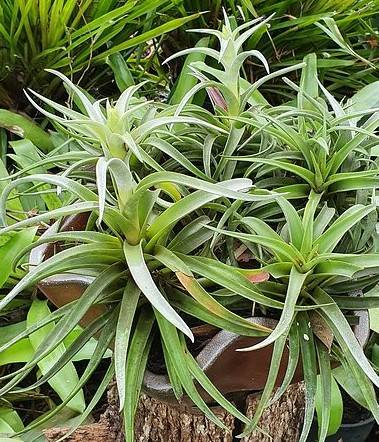
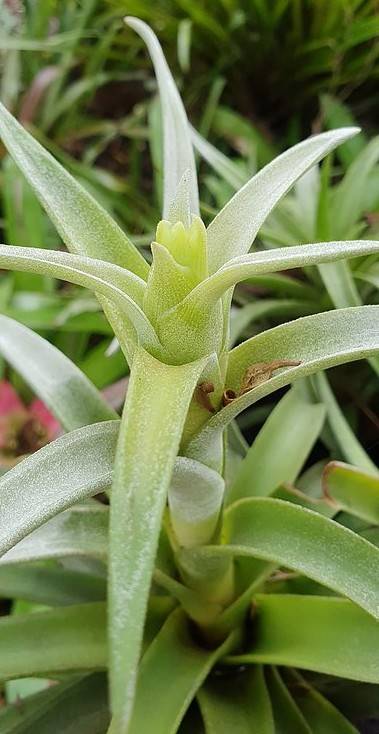
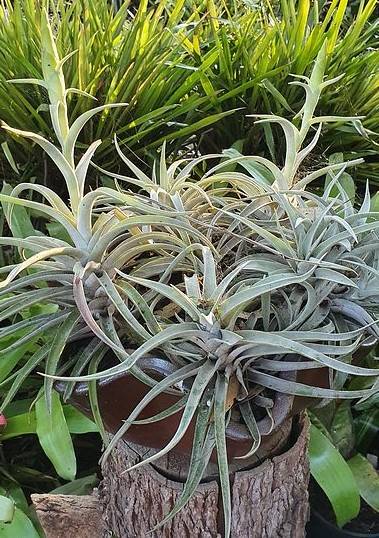
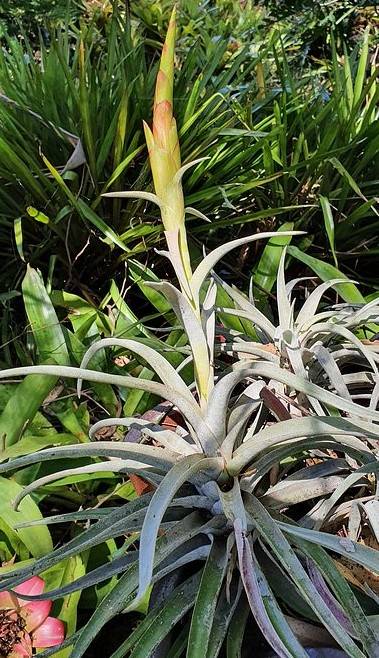
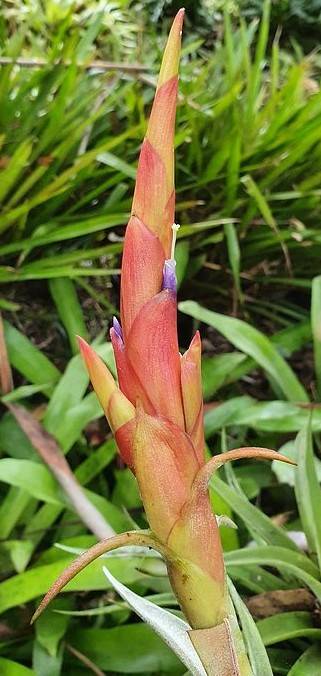
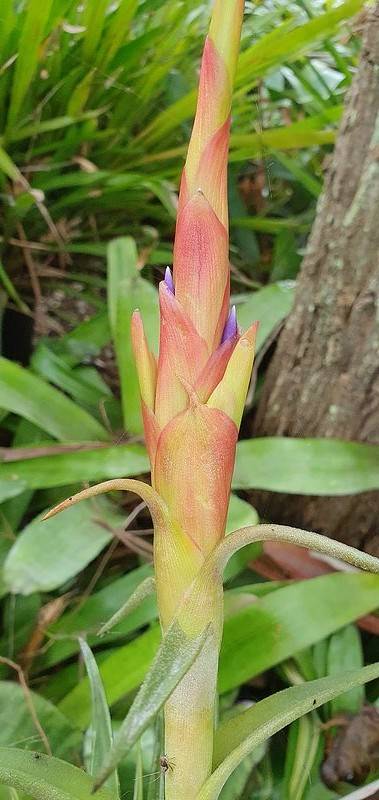
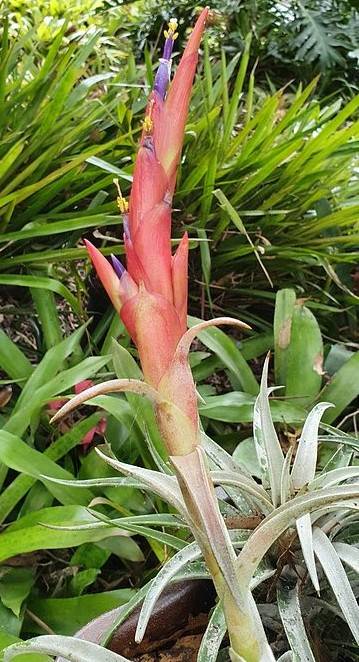
Plant in large groups, with to 80cm long stem, the back portion dies back and the front part promotes new roots, growing upwards, making a large, to 35cm wide ca. secund rosette.
Leaves numerous, spirally arranged.
Sheath indistinct, elliptic, with bent edges, light brown, on both sides dense grey scaled, ca 45 x 30mm.
Blade narrow triangular, long acuminate, 15mm wide next to sheath, to 15cm long, the edges bent and wholly covered with fine, asymmetric scales, erect or bent over, both sides dense white/grey almost pruinose scales.
Scape to 12cm long, erect, round, green, glabrous, 6 – 7mm diam, covered by the sheaths of the subfoliate scape bracts.
Scape bracts lower ones with up to 8cm long blades, upper ones 2 – 3cm long, spreading at an angle of 45 degrees.
Inflorescence simple, exceeding the leaves, lanceolate (rarely narrow elliptic), 7 – 13cm long, broad elliptic in cross section ( 13 – 19mm), with 5 – 9 tristichous to spirally arranged, dense adjacent to the rhachis, scentless flowers.
Pedicels ca 3mm long.
Rhachis green, glabrous, rounded on the side away from the flower, and concave on the same side, generally not edged.
Floral bracts 34 – 44mm long, 20 – 30mm wide, broad elliptic to almost round, with short hooked tip, longer than the sepals, both sides glabrous (or hardly discernible, vestigial, dense appressed, laxly covered trichomes), and more or less shiny, inside strongly nerved, light green, outside red, green red or yellow green with reddish overlay, sometimes the upper tip with scattered scales.
Sepals 27 – 30mm long, 11 – 14mm wide, mildly hooded, the tip rounded or obtuse, inverted eggshaped elliptic (broader above the middle), light yellow green, shiny, glabrous, ca. nerved, becoming thin membranous with almost hyaline edges, joined 0.9 – 1.mm in the front, and 1.8mm high posteriorly, and in the lower half very weakly and blunt keeled.
Petals tongue-shaped, acuminate, making an erect tube, the whole tip a little bent towards the outside, to 55 – 58mm long, ca 10mm wide, 5mm wide at base, the upper portion dark violet, the lower part whitish transparent.
Stigma and Style exceed the petals by 5 or 10 –30mm respectively.
Filament 57 –70mm long, ribbonlike, the upper 1.2 x 0.2mm same colour as the petal, narrowing towards the base, and becoming a loghter colour, twisted.
Anther dorsifix (filament inserted in the lower third), versatile, 4 – 6mm long, narrow elliptic, green brown, covered densely with yellow pollen.
Gynaecium 60 – 90mm long.
Ovary (conical) cylindric, pale green, 12mm high, 3 – 4mm diam,
Style to 45(- 80) mm long, round, thin, yellowish white in upper portion, white in the lower.
Stigma small, 1.2mm diam, erect, the lobes hardly spreading, light green with papillose edges.(Type II Brown and Gilmartin)
Habitat Growing on rocks, near river Teculutan, at 500m, between La Piedra de San Antonio and Piedra del Galapago, El Zapato, Zacapa, Guatemala.
Type Bill Harris s.n (Holotype WU). Guatemala, Zacapa, El Zapato, La Piedra de San Antonio, near river bank of Teculutan, 500m.s.m, on rocks.
Differs from T. hondurensis in
1. Stem distinct and up to 80cm long
2. Grows larger
3. Leaf blades longer and more narrow
4. Scape distinct and up to 12 cm long
5. Inflorescence lanceolate, exceeding the leaves
6. Floral bracts glabrous, wide ovate or subround
7. Sepals a little longer and glabrous
The plants were sent to me by FEMO-Luftnelken in Langenfeld, Germany; it is named after collector and exporter Bill Harris murdered in 1985 in Guatemala.